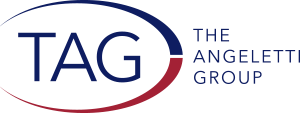Giving USA Foundation has released its highly anticipated annual report on giving—perhaps the most eagerly awaited report ever as those in the nonprofit industry waited to see how the events of 2020 would impact philanthropy. Facing a worldwide pandemic, economic shutdown, social injustices, and a tense Presidential election, Americans came together to support the greater good. History shows us that our philanthropic spirit is resilient – even following 9/11 or during the Great Recession, donors continued to give. Certainly no one could have imagined what 2020 was going to look like and how it would affect philanthropy. However, despite challenging times, those who have the capacity to make the greatest difference are responding with seven, eight, and nine-figure commitments to those organizations they care about the most.
TAG is excited to share key findings from this year’s Giving USA: The Annual Report on Philanthropy, presented by the Indiana University Lilly Family School of Philanthropy and the Giving USA Foundation.
According to the report, giving reached $471.44 billion in 2020, a 5.1% increase over 2019 and an all-time high. Total giving has increased every year since 1980, except for the three years that we saw declines: 1987, 2008 and 2009. While record giving is a positive sign for the nonprofit industry, a few shifts in the landscape merit attention.
- Giving reached a new high despite a period of economic downtown—and was impacted by the economic, social, and political environment. The giving environment in 2020 was complex, especially in the mid-year 2020: the COVID-19 pandemic, economic need, racial justice, and social justice movements. We know that giving is highly associated with the financial markets as well as economic posterity. Following the pandemic and related shutdowns, economic recovery began to take place towards the end of 2020 and was boosted by the impacts of the federal government with the CARES Act. By the end of the year there was a strong but uneven recovery in the impact of the CARES Act and the S&P 500 grew 16.3%. Uncertainties in the early half of the year may have stunted giving, while forward progress and a stabilizing market may have bolstered charitable giving at year-end.
- Giving by individuals, foundations, and bequests grew in 2020 over 2019—giving by corporations, however, declined by 6.1%. Economic factors contributed to the decrease in corporate giving, including the decline in GDP and decline of corporate profits for the year 2020. However, many corporations took a deeper look at their efforts to address diversity, equity, and inclusion in the wake of heightened awareness of social injustices. As such, corporations may be reviewing their funding priorities and issuing new guidelines for future grant opportunities. Giving by foundations—which includes grants made by independent, community, and operating foundations—represented 19% of all gifts. Because foundations typically give a percentage of their assets, they were buoyed by the strong stock market and able to step up and give to areas that needed it most during this tumultuous year. Many, in fact, gave above and beyond required distribution levels. Giving by foundations increased by 17% in current dollars (compared to a much more modest increase of 2.5% the year prior), marking a new record for foundation giving. Giving by foundations has grown substantially as a percentage of total giving over the last 40 years, from 6 percent in the first five-year period to 17 percent in the last five-year period, indicating the increase of individuals using foundations and donor advised funds as giving vehicles.
- Seven of the nine charitable sectors saw growth in 2020. Public-society benefit (15.7%) and environment/animals (11.6%) experienced the most growth, followed by human services (9.7%), international affairs (9.1%) and education (9%). Many human services organizations were on the frontlines of addressing food insecurity, domestic violence, housing issues and many other basic needs. This growth in human services giving continues a pattern seen in pervious recessionary years as well as years where the United States had experienced crisis. Unfortunately, giving to arts, culture, and humanities declined by 7.5% in 2020. The shutdowns caused by the pandemic impacted in-person events for many arts organizations, culture, and humanities organizations. This subsector, as seen in the past, is largely impacted by the economy.
- 2020 saw unprecedented events and innovation in fundraising models. In most cases, charities that pivoted to providing online services and conducting traditional fundraising via virtual methods were able to sustain revenues and uncover new methods for interacting. Crowdfunding, mutual aid, and other forms of nontraditional philanthropy served an important role in responding to COVID-19 and calls for racial justice. Several reports from around the field indicated that some nonprofits experienced an influx of new donors. Nonprofits will need to communicate their impact to build relationships with these donors and inspire future giving.
- Online giving is a growing share of total giving. For the past two decades, online giving has stayed below 10% of overall giving. In 2020 that number reached 13% of overall giving—especially prevalent during stay-at-home orders and for immediate response giving. Donating online is continuing to grow, especially as the population becomes more and more comfortable with it in our increasingly digital world, and it will be important for nonprofits to keep this in mind.
Will the upward giving trend continue? It is too early to tell but TAG believes philanthropy as an institution will persevere and continue to play an important role in the fabric of our economy. If there’s one thing last year taught us all, it’s that nonprofits—and fundraisers—must remain nimble, think creatively, communicate frequently, and be ready to make sweeping changes to respond to emergent needs and shifting situations.
Source: Giving USA 2021


